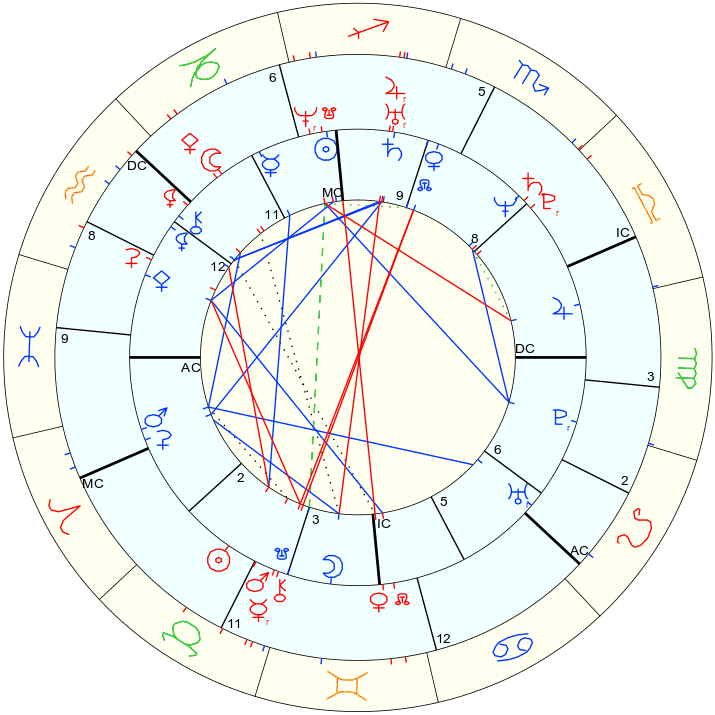Unraveling the Mysteries of Relationships Through the Stars
Astrology is an ancient practice that has been used for thousands of years to understand human behavior, predict future events, and interpret the relationship between celestial bodies and our lives. One of the most fascinating aspects of astrology is synastry, the study of relationships by comparing two individuals' natal charts. A synastry chart can help us gain insights into the dynamics of a relationship, uncovering its strengths, challenges, and potential growth areas. In this article, we will guide you through the process of reading a synastry chart and understanding the cosmic connections between two people.
Step 1: Understand the Basics of Natal Charts
Before diving into synastry, it's crucial to familiarize yourself with the basics of a natal chart. A natal chart is a map of the sky at the exact moment and location of a person's birth. It contains vital information about the positions of the planets, the zodiac signs, and the twelve astrological houses. Each of these elements has its own unique characteristics and interpretations. Read all about birth charts here.

Step 2: Obtain Your Synastry Chart
To read your synastry chart, you'll first need to have one created. To do this, you will need your exact birth date, time, and location, and the same for an additional person. Several online resources can generate your natal chart for free, and most astrologers use Astro.com for this purpose. You'll find a link in the menu of this site titled "Run Your Chart," or click HERE and it will take you to the correct place at Astro.com. In the chart options, choose synastry, which is the second choice.

Step 3: Identify and Analyze the Aspects
Aspects are the angular relationships between planets in the two natal charts. They indicate how the planetary energies interact and influence each other. The major aspects to consider in synastry are conjunctions, sextiles, squares, trines, and oppositions. These aspects can be harmonious, challenging, or a mix of both.
-
Conjunctions (0°): This aspect occurs when two planets are in the same zodiac sign and degree. Conjunctions can intensify the energy of the planets involved, leading to a powerful connection between the two individuals.
-
Oppositions (180°): Oppositions represent a tug-of-war between two planets, creating a sense of polarity or contrast between the individuals. While these aspects can lead to conflict, they can also promote balance and complementary strengths when approached with awareness and compromise.
-
Squares (90°): Squares indicate tension and challenge in the relationship. These aspects can create friction, but also growth and evolution if the individuals are willing to work through the issues.
-
Trines (120°): Trines are considered highly favorable aspects, representing a harmonious flow of energy between two planets. These connections often bring out the best qualities in both individuals, fostering mutual support and understanding.
-
Sextiles (60°): Sextiles represent a harmonious relationship between two planets, suggesting an easy flow of energy and compatibility between the individuals.
Step 4: Examine Interaspects Between Personal Planets
Personal planets (Sun, Moon, Mercury, Venus, and Mars) play a significant role in synastry, as they represent the core aspects of our personalities. Pay close attention to the aspects formed between the personal planets in both charts, as these interactions can reveal the fundamental dynamics of the relationship. For example, harmonious aspects between the Sun and Moon often indicate emotional compatibility, while challenging aspects between Venus and Mars may suggest conflicting desires and values.
Step 5: Evaluate Outer Planets and House Overlays
The outer planets (Jupiter, Saturn, Uranus, Neptune, and Pluto) represent deeper, more complex aspects of our personalities and lives. While their influences are subtler in synastry, they can still reveal important insights about the relationship's growth, challenges, and spiritual connections.
House overlays occur when a planet from one person's chart falls into a specific house in the other person's chart. These overlays can provide valuable information about how each individual affects different areas of the other's life.
Step 6: Synthesize the Information and Interpret the Relationship
Now that you've analyzed the aspects, interaspects, and house overlays, it's time to synthesize the information and interpret the relationship as a whole. Keep in mind that no relationship is perfect, and every synastry chart will contain a mix of harmonious and challenging aspects. The key is to understand the overall balance of these elements and how they contribute to the dynamics of the relationship.
Consider the following questions when interpreting the synastry chart:
- What are the main themes or patterns that emerge from the aspects and overlays?
- How do the individuals' strengths and weaknesses complement or challenge each other?
- Are there any recurring aspects that highlight areas of growth or potential conflict?
- How might the outer planets' influences impact the relationship over time?
Conclusion:
Synastry is a fascinating and complex field within astrology that can provide valuable insights into the dynamics of a relationship. By understanding the various aspects, interaspects, and house overlays, you can gain a deeper understanding of the cosmic connections between two people. Remember that the synastry chart is only one tool in understanding relationships; open communication, empathy, and mutual respect are essential for cultivating a healthy and fulfilling partnership.
Order a Custom Chart
A custom natal report can go a long way towards helping you understand yourself. They are about 50 pages long, and packed full of information about you!
You can check out a sample report at the right, or order your own by clicking here!
We also have other reports available, like synastry reports or parenting assist reports, meant to help you have a deeper understanding of your children.
